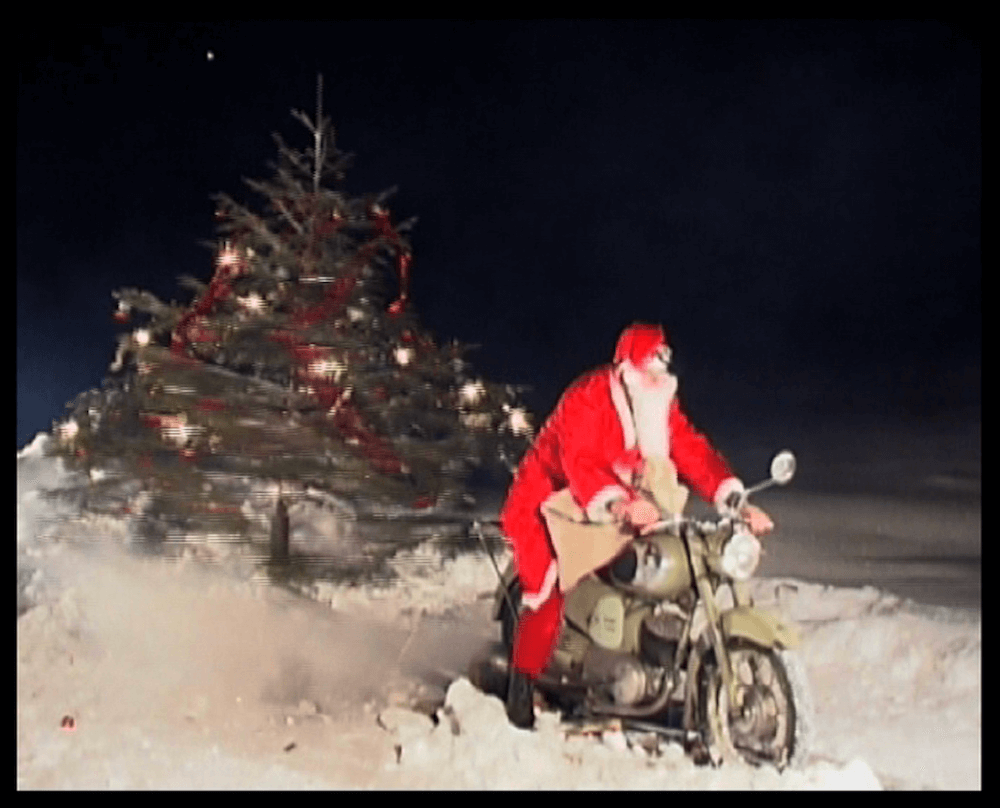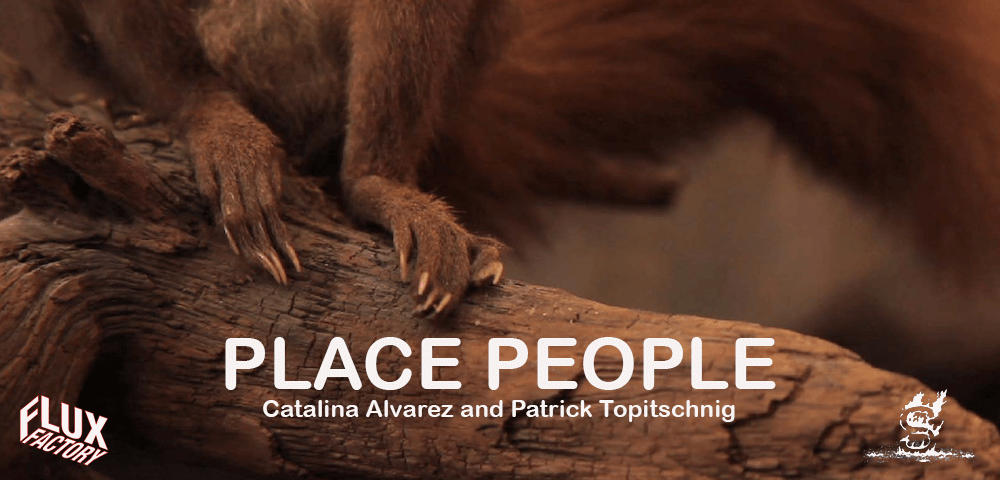
PLACE PEOPLE: CATALINA ALVAREZ AND PATRICK TOPITSCHNIG
THURSDAY, JUNE 30 – 7:30 PM
ARTISTS IN PERSON!
ONE NIGHT ONLY!
In Place People, the video works of artists Patrick Topitschnig and Catalina Alvarez are presented in counterpoint: documentary forms are explored and deconstructed, technology and ecology merge and emerge, and landscape mythologies and their characters are explored in various shades of truth and fiction.
PLACE
wherethereisawill, 2005, 2:42, Austria, Patrick Topitschnig
Carusel, 2017, 5:47, Romania, Patrick Topitschnig
KRIPPE/CRIB, 2012, 6:06, Austria, Patrick Topitschnig
Mark&Garry, 2013, 7:20, Australia, Patrick Topitschnig
FELD, 2019, 5:21, Mexico, Patrick Topitschnig
PEOPLE
Sound Spring Seq. #3, 2020, 10:50, USA, Catalina Alvarez
Sound Spring Seq. #6, 2020, 11:03, USA, Catalina Alvarez
Paco 2016, 12 min, USA, Catalina Alvarez
RUMOR MACCHINA, 2009, 2:44, Austria, Patrick Topitschnig
schnitzl, 2006, 15sec, Austria, Patrick Topitschnig
Approximate runtime: 65 minutes.
Full program descriptions below.
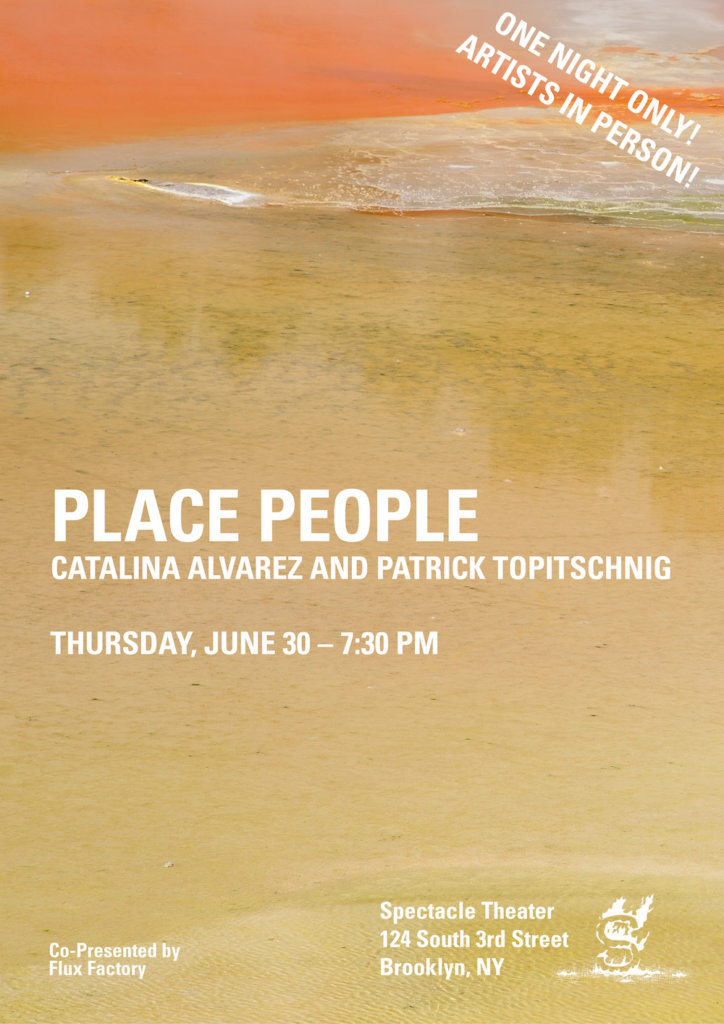
Catalina Alvarez makes choreographed films and experimental musicals. In her anthology documentary, Sound Spring, residents of Yellow Springs, Ohio become actors lip-syncing to their own interviews, narrating their village’s role in American history over hundreds of years. Her 16mm shorts include Paco, the story of a man who wants you to bounce on his lap. With this film and all her others, Catalina Alvarez gets to know her neighbors.
Patrick Topitschnig is an Austrian filmmaker and audio artist whose works also include collaborations with theatre projects.
“A kind of black humor pervades Patrick Topitschnig’s videos. Like in the horror-movie genre he works with audiovisual situations which affect the bodies of the spectators, provoking an uncertainty, sometimes a slight restlessness. Precisely composed images expose their own constructedness and testify to the artist’s interest in cinematic duration. Occasionally, this duration becomes a metaphor for the literal “lifetime” of protagonists, objects, and buildings. All aspects of cinematic sound – a composed score, music, spoken language – are used to reflect the connections between image and narration creating a very specific atmosphere, whereas the “real“ backstory of a work is often revealed much later, be it the history of an abandoned salt mine in Romania or a portrait of a high-tech funeral home in Australia.“ – Claudia Slanar
wherethereisawill,
dir. Patrick Topitschnig, 2005.
2:42. Austria.
In the thoughtless gyroscope, investments and desires turning ad infinitum, matters and contents are dissipated.
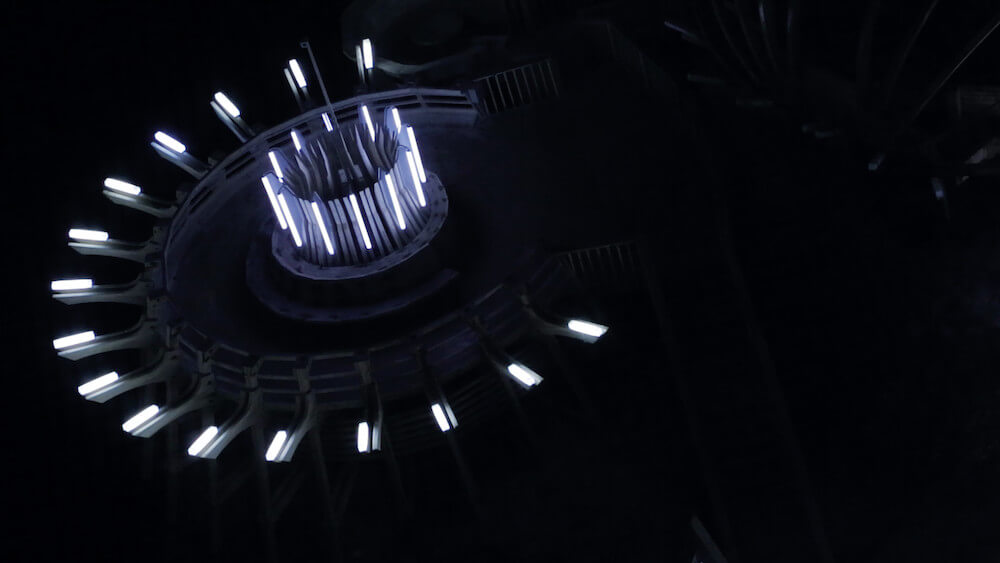
Carusel
dir. Patrick Topitschnig, 2017
5:47. Romania.
Through precisely composed filmic tableaux and minimal movements, Carusel encapsulates the image of an underground, post-apocalyptic playground, while elsewhere various doomsday scenarios take their course. It portrays the Zeitgeist phenomenon —celebrated by pop culture in graphic novels, computer games and television series’— in all of its pessimistic bliss.
Carusel was shot in the damp caverns of former Romanian salt mine Salina Turda, which was reused as a bomb shelter during World War II, then refurbished as an underground amusement park. Though equipped with a carousel, ping-pong tables, a children’s playground and rowboats, the site’s massive threatening/imposing steel structures and surreal neon objects still radiate a gloomy atmosphere and ambience of fear.
Carusel triggers chains of associations between mythical traditions and the fear of darkness, underground and uncertainty. In an elevator ride in one of the scenes towards the end of the film, we eavesdrop on the conversation of a family, suggesting that the world is still standing. It seems that the mythical echoes of the past still resonate in this space, and absurdly merge with the eerie and bizarre theme park.
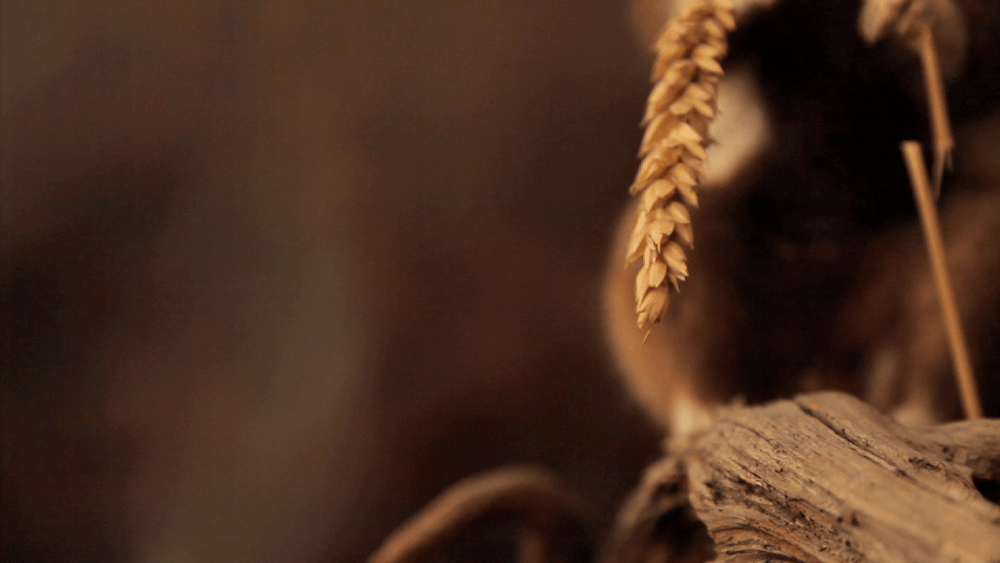
KRIPPE/CRIB
dir. Patrick Topitschnig, 2012
6:06. Austria.
“The breath is the greediest part of the body.”
In German and Austrian mythology, the Raurackl or Wolpertinger is a chimera, which is described to have various appearances. Mostly they are portrayed as a mixture of a rabbit’s body, eagle wings, deer antlers and duck feet. According to the mythology, the Raurackl can only be trapped by luring it with salt to the edge of the forest during a full moon. Also it has to be done by a young, pretty girl beside a righteous and honest man.
Historically, those creatures were invented by taxidermists to boost their income. Those mixed chimeras can be found in many different forms and various cultures. In Australia it is named Bunyip by the Aborigines. The Bunyip is described as a snake-like mixed creature with a bird‘s head. In the United States it is the Jackalope, a horned hare which drifts trough the wood.
Crib shows parts of stuffed animals that are “dissected” by the camera. The repertoire of forms includes nails, claws, hair and feathers of the animals. By the exchange between sharpness and blur the recipient apprehends only the fragmented “material.” However, they are not being represented as a whole. Only through the filmic montage they are brought together as one.
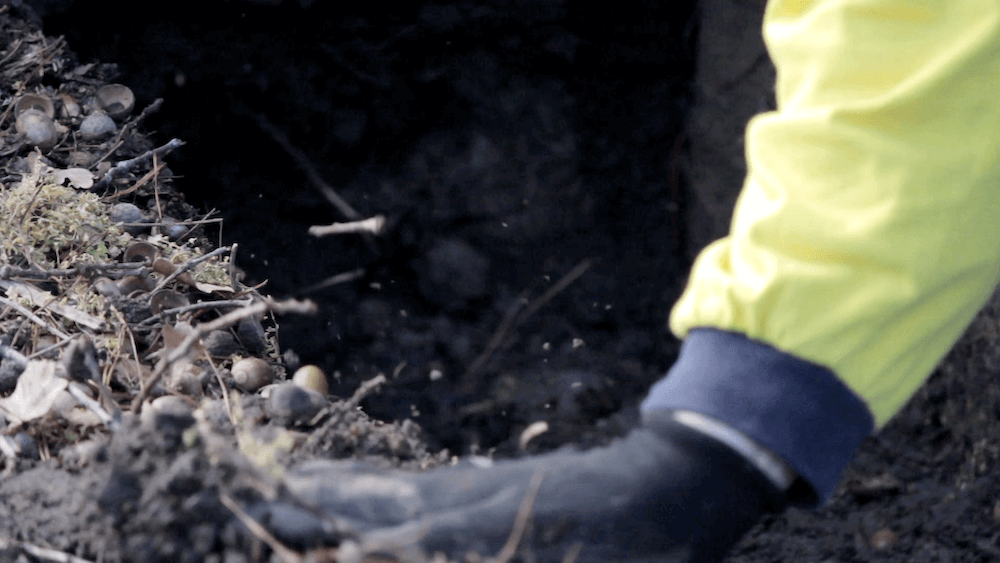
Mark & Garry
dir. Patrick Topitschnig, 2013
7:20. Australia.
“All aspects of life, including death, are now accompanied by machines. The archaic notion of burial using hand tools is long passé. Massive excavators do the job of gravediggers while Mark and Garry discuss their work in Melbour- ne’s main cemetery. Silently, peacefully, the trees rock in the wind behind the rows of gravestones that remain as markers and representatives of a quondam human presence.” —Janina Falkner & Marlies Wirth (Exhibition catalogue: VIENNA BIENNALE 2017: Robots. Work. Our Future)

FELD
dir. Patrick Topitschnig, 2019
5:21. Mexico.
FELD was filmed at the Espacio Escultorico, a Land Art sculpture conceived in 1979 by seven Mexican artists, consisting of 64 concrete pyramids (wedges) which are arranged in a 120 meter circle around a 2000 year old volcanic rock.
The first part of FELD scrutinizes a rocky surface imitating the human point of view with a narrowed focus that keeps the spectator close to the surface. The gaze shifts as the camera moves slowly and steady upwards in a concentric gear-like flight. Although the setting unfolds, uncertainty remains. FELD plays with the perception of size and dimension. A haptic, palpably close feel gradually switches into a distant, unearthly view.
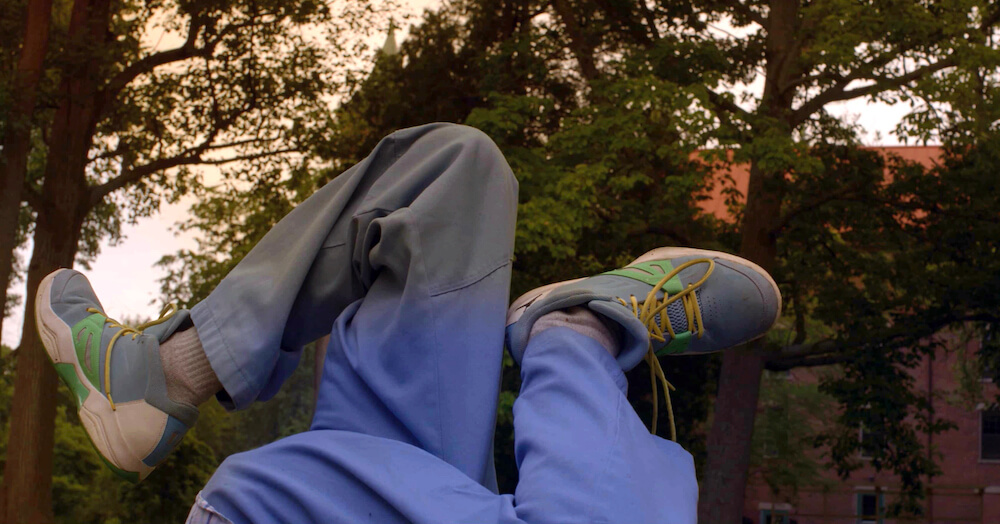
Sound Spring Seq. #3
dir. Catalina Alvarez, 2020
10:50. USA.
In the anthology documentary Sound Spring, residents of a village in Ohio narrate their personal entanglements with its larger historical struggles, from civil rights to income equality.
In Seq. #3: The Old Student Union, a breakdancer (Charles Arthur Williams) and his DJ collaborator (Shane Creepingbear) play on the steps of their old abandoned student union.
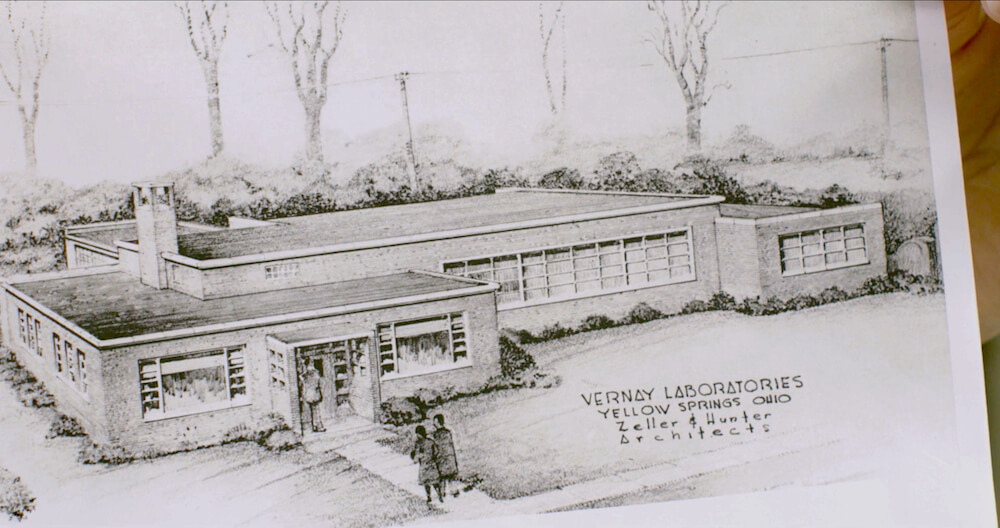
Sound Spring Seq. #6
dir. Catalina Alvarez, 2020
11:03. USA.
Sound Spring Seq. #6: The School and the Home is a chapter from an anthology documentary exploring the social justice history of Yellow Springs, Ohio. This piece focuses on the memories of a former student (Jalyn Roe, played by Sumayah Chappelle and Rukiya Robertson) at the Antioch School and her experience of meeting Dr. Martin Luther King Jr. as a child.
“The work is shot like a traditional talking head interview, but with one key stylistic manipulation: the on-screen interviewees are two girls who lip sync to the overdubbed audio. This change creatively subverts one of the basic tropes of documentary filmmaking and brings new meaning to the artist’s otherwise minimalist approach.
Instead of directly documenting her subject, Alvarez creates an impression of her as she might have been at the time of her recollections. Casting the young girls as the on-screen avatars of the original subjects creates a generational dialogue and a sense of a parallel, shared experience. Alvarez further heightens the surreality of the scene by splicing in diegetic audio where she can be heard directing the girls from behind the camera.”
-OVC 2020 with Lino Kino, ICA Philadelphia
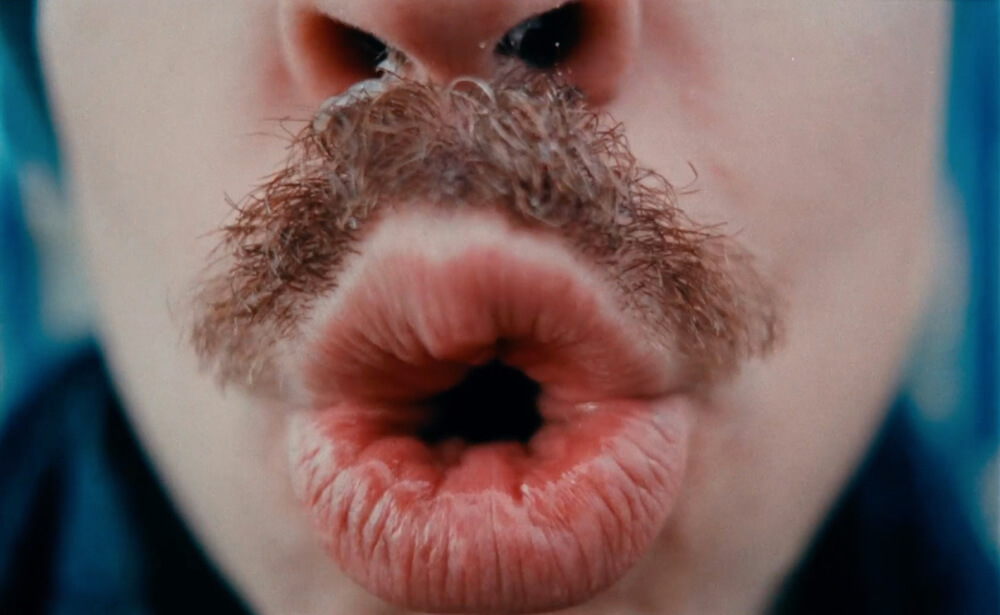
Paco
dir. Catalina Alvarez, 2016
12 min. USA
16mm film transferred to Video.
He wants you to bounce on his lap.
“A brilliant comic portrait of a catcaller
choreographed with a non-professional cast
and captured with disarmingly intimate 16mm photography.”
– Fantastic Fest, Austin, TX
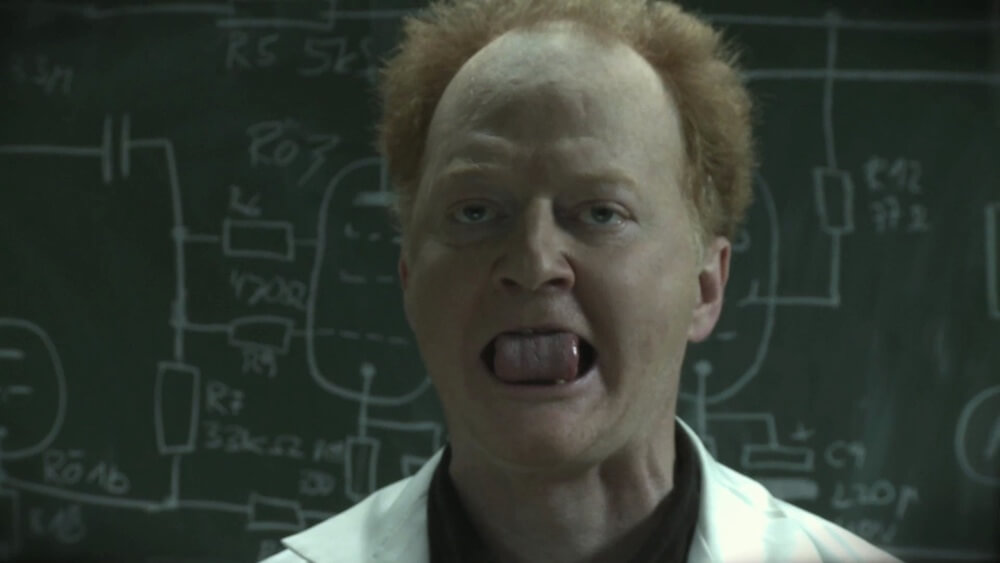
RUMOR MACCHINA
dir. Patrick Topitschnig, 2009
2:44. Austria.
The rumor macchina is a machine which converts acoustic signals into energy. Done in the style of a documentary, the “inventor” of this machine is interviewed and accompanied during a conversion. He describes both his motivation and vision for coming up with this ground-breaking achievement.
The inventor tells of his vision of a self-perpetuating, independent system, which is operated by audio input. His machine makes it possible to start electronic equipment via a human cry or shout — and to keep it running in the same way. On the other hand, if the output of noise emanating from the equipment itself reaches a high enough degree, then it could -once started- continue running solely on its own power.
In his opinion, the rumor macchina would also be a solution to the problem of noise in big cities, as this would no longer be seen as pollution but as a necessary alternative energy source. Any discussion, any insult hurled — all the noise from engines and motors would thus be converted into usable energy. Shouting courses for efficient energy production and additional jobs with “shout energy producers“ would be created – you could boil an egg simply by shouting at it.
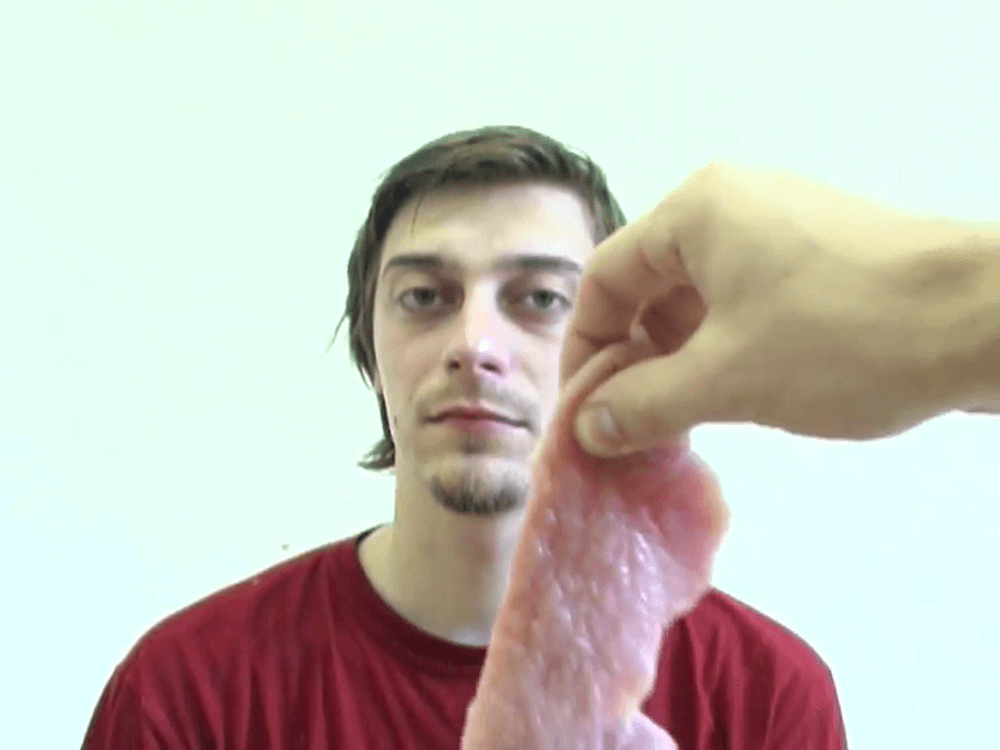
schnitzl
dir. Patrick Topitschnig, 2006
15sec. Austria.

Co-Presented by Flux Factory
Flux Factory is a not-for-profit arts community space in Long Island City, Queens. Flux Factory’s Mission is to support emerging artists through Artist-in-Residencies and Exhibitions, education and collaborative opportunities. Flux is an artist-led space that builds sustainable communities and retains creative vitality in NYC. Since 1994, Flux has hosted over 300 Artists-in-Residence, both local and international, as well as staging over 700 exhibitions across all disciplines.

